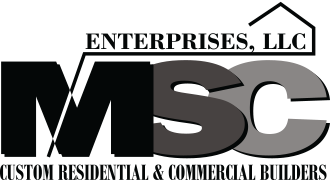As more people continue to work from home or make the shift, there are a few critical aspects to consider to maintain productivity and expand the versatility of the home office space.
As a result of the COVID-19 outbreak, millions of employees were forced to work from home for a period of time. Even as constraints loosen, employees are showing a strong interest in more permanent work-from-home arrangements, which are becoming more widely accepted by businesses.
Workers will have a lot of freedom if more work-from-home policies are implemented. However, it also necessitates better home-office setups. The kitchen table or couch that served as a makeshift shelter during the pandemic should not be considered a long-term solution.

If you want to work part-time or full-time in your new home, what features should you look for?
First, Define Your Workspace
Rather than putting a desk in the corner of another room, make sure there is a designated home office space. Specifying a dedicated workspace is important, even if it’s not the roomy, well-lit, idyllic home office of your dreams. Having a dedicated workspace fosters a professional mindset, as well as a more professional backdrop for all those video calls. Creating a mental barrier between the office and your living area can help reduce distractions and make it easier to leave work at the end of the day.
Consider the following features inside that designated area:
Number of Outlets & Placement
Make sure there are plenty of power outlets for you and the rest of the family if you have a hard time sitting in the same chair all day and frequently turn to the kitchen island or other place for a change of scenery.
Determining where the desk will be might also assist in determining where outlets should be placed. Wires will be kept out of the way with in-floor outlets.
WIFI Range
WiFi boosters may be required, depending on the size of your home, to ensure that you have a signal whether you’re in your office, on the couch, or on the patio. Depending on the size and layout of your home, a mid-to-high-end router may provide all the Wi-Fi coverage you’ll need, but for homes built with dense materials like brick, concrete, plaster, and metal, some level of signal degradation is almost a certainty.
Working from home necessitates not only a sufficient amount of bandwidth, but also a consistent level of bandwidth. When they don’t get it, the phone conversation you’re having with your boss over your company’s voice over IP (VoIP) phone system sounds like one of you is drowning. Many consumer-grade apps, particularly video streaming services like Netflix, and certainly the most recent games, are in the same boat.
In that case, most people believe they need to improve their Wi-Fi, so they either buy a new wireless router or increase their internet service, or both. It’s possible that a range extender will suffice. Range extenders pick up the Wi-Fi signal from your router, enhance it, and rebroadcast the amplified signal.
Soundproofing
If you have children or animals in your home, consider adding extra soundproofing to your home office to help block out sounds. Ascertain that the room’s door is also sound-proofed.
People who work remotely in 2021 may have a large number of family members or housemates who also work from home. Look for strategies to cut down on distracting noises. While noise-cancelling headphones may be the office accessory of the year, others may choose for double or triple-pane windows, as well as other soundproofing tactics like carpeting or acoustic panels.
Storage
Include a built-in closet with shelving. Having an out-of-sight storage area for files and supplies keeps the room, desk, and mind clutter-free. The closet will also make the room more adaptable in the event that it needs to be converted into a bedroom at a later date.
Whether you work from a dedicated home office or from your living room, kitchen, or spare bedroom, having the office storage solutions is critical to keeping your workspace organized and neat. This will assist you in concentrating and focusing, which is especially vital when working from home and dealing with daily distractions.
You must first determine how much ‘stuff’ you have to store before deciding which office storage solution or solutions will work best for you. Separate the goods you need to be easily available (i.e., those you can reach from your chair) from those you’d rather keep hidden. For things you need every day, open shelves or a desk with storage are usually the best options, while filing cabinets are perfect for paperwork and storage boxes are recommended for larger goods you require less regularly.
You should also think about how much space you have. If you have a tiny room and want to put everything in one location, choosing one large item such as a desk or bureau may be the best solution. If you already have a desk, consider using wall space to hold notes, memos, and business cards by hanging a peg board or a cork board.
Lighting
To improve the mood and reduce your artificial lighting needs, make sure there is plenty of natural light in the space. Consider where you might want to put the desk when you’re planning the space with your architect, and make sure sunshine won’t reach the computer screen and cause glare.
Sunlight is great for creativity, but when it becomes dark, use lamps with warm-colored lightbulbs to provide a relaxing environment for introspection and productivity.
When it comes to non-natural light, some people prefer a choice of options. When it comes to constructing their home offices, most people overlook good lighting, yet it is critical to offer adequate job lighting to decrease eye strain. The correct light levels for a comfortable work environment are created by combining desktop lighting with overhead ambient lighting. This diversity can also provide flexibility, allowing you to select the best lighting for a particular job.
This variation gives the area a more dynamic and flexible feel, and using lighting that is suited for the work at hand—reading print materials versus looking at a screen—helps to avoid eye strain.
Ventilation
Short-term (nose and eye irritation, colds) and long-term (respiratory disease, cancer) health impacts can be caused by poor indoor air quality. It’s becoming even more of a problem as homes become more airtight and energy efficient. Consider a mechanical ventilation system that exchanges dirty indoor air with fresh outdoor air, such as a heat recovery ventilator or an energy recovery ventilator.
Working remotely has many advantages, but it also requires a fine balance between the two situations. Smart design and planning ahead of time can assist maintain a professional setting while keeping the conveniences of home.


